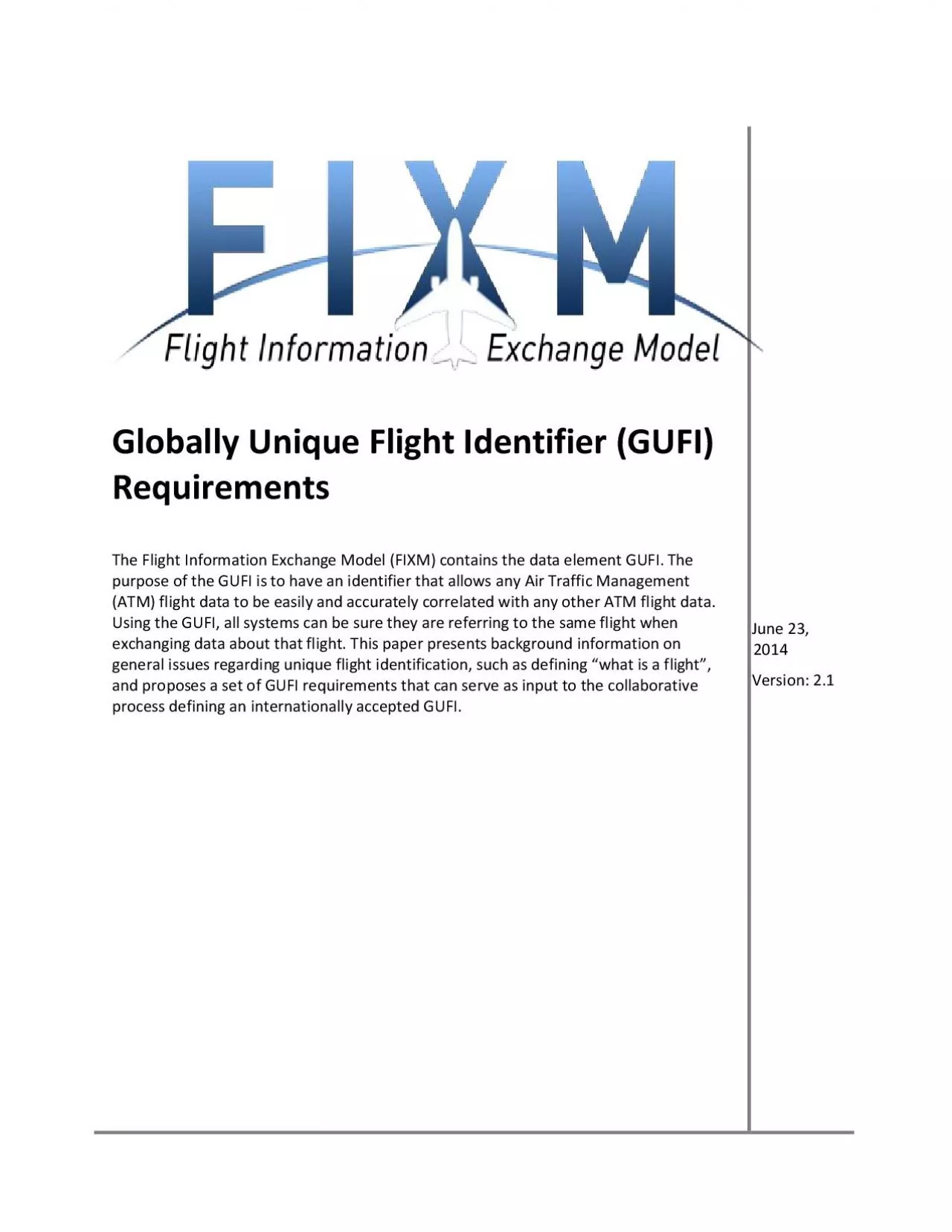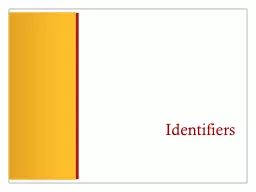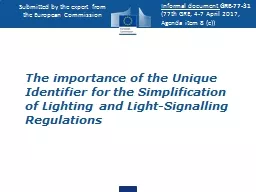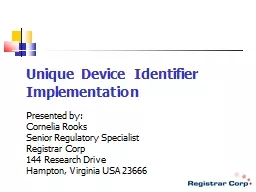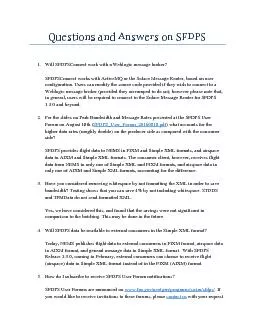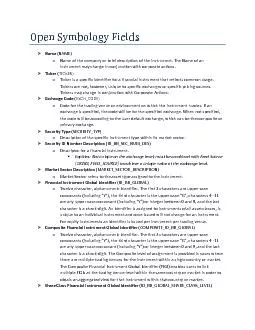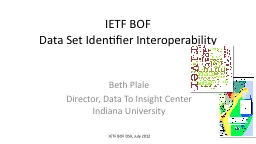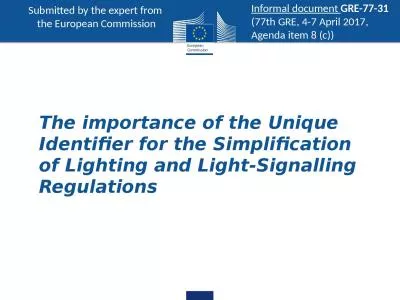PDF-Globally Unique Flight Identifier GUFI
Author : joy | Published Date : 2021-06-20
Requirements The Flight Information Exchange Model FIXM contains the data element GUFI The purpose of the GUFI is to have an identifier that allows any Air Traffic
Presentation Embed Code
Download Presentation
Download Presentation The PPT/PDF document "Globally Unique Flight Identifier GUFI" is the property of its rightful owner. Permission is granted to download and print the materials on this website for personal, non-commercial use only, and to display it on your personal computer provided you do not modify the materials and that you retain all copyright notices contained in the materials. By downloading content from our website, you accept the terms of this agreement.
Globally Unique Flight Identifier GUFI: Transcript
Download Rules Of Document
"Globally Unique Flight Identifier GUFI"The content belongs to its owner. You may download and print it for personal use, without modification, and keep all copyright notices. By downloading, you agree to these terms.
Related Documents

